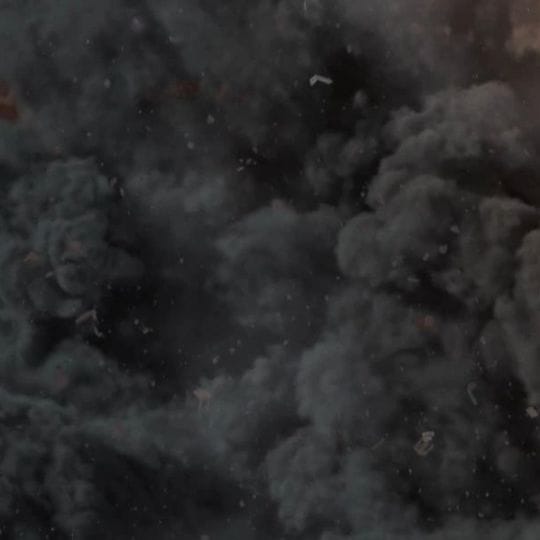With The Wandering Earth rocking the Chinese box office, we ask Bottleship VFX’s Hristo Velev how he unleashes destruction while keeping his business on track.
Need to destroy something? Bottleship VFX is the place to go. In the past year, this mayhem-obsessed Bulgaria-based studio has blown up buildings for Hunter Killer; orchestrated splashed-down planes for Air Strike; unleashed mountain-sized tornados on Mars for Forsaken; created swarms of flying mobile phones for 2.0; and last, but certainly not least, helped a pair of characters escape an imploding tower for Chinese box-office phenomenon The Wandering Earth.
The sheer amount of work is impressive, as is the quality — Bottleship VFX’s work always convinces, whether it’s a World War II-era explosion or a fantastic winged creature. Managing Director Hristo Velev and his small team make use of a number of pieces of software — including V-Ray for 3ds Max and Krakatoa — to maintain control over their chaos.
Based on his team’s experience working on recent movies, we asked Hristo for some of his best advice for creating movie VFX with a modest crew.
Kaboom! Bottleship VFX's 2019 feature film reel.
Do what you do best to stand out in any particular field.
Our projects contain a hefty dose of simulation work. These are mostly carefully guided, directed and orchestrated physical simulations of several types: rigid and soft body for destruction, liquid for water, gaseous for fire, smoke and explosions, and a bunch of secondary particle ones for adding detail and richness to the underlying basic simulations.
Always keep an eye on the bigger picture.
All our simulations happen in an environment, which is our second key field. There it’s mostly about sculpting terrain and designing ecosystems, then pushing them through long renders, integrating with simulations, and coming up with creative lighting that builds the right atmosphere.
Snowy destruction for The Wandering Earth.
Specific problems are a great chance to try new tools.
Our sequence for The Wandering Earth is set in a snowy environment, indoors in a building that's falling apart, and then outdoors. Destroying snow is challenging: everything is translucent, displaced, motion-blurred; there are millions of chunks of snow — and it's all buried in layers of dust and smoke. We made use of some new tools here, like the Vexus scene management system, and our pipeline went through significant development.
Directors need to direct, and it’s our job to give them plenty of options.
More importantly, we need to do it with setups that involve multiple stages of interdependent simulations, renders and composites — which is the key challenge. The most valuable — but also the most difficult — thing we can do for each project is to balance between heavy-execution effects and flexibility.
Explosive results in Hunter Killer.
Focus resources carefully.
We try to limit the number of shots that are in progress simultaneously, and sometimes juggle the state of shots often. It helps when work is done in a clean and well-organized way, so it’s easier to shuffle artists between shots and tasks. These are all difficult options, but sometimes you just have to resort to them.
Good communication is vital.
We work with studios around the world and we’re all solving similar problems, with similar tools, under similar pressures. It's helpful to be thoughtful about how you ask a question, so the other side is led into a productive way of answering. We're all dealing with a lot and a big problem in one area of the production might not be important to somebody else.
Smartphone swarms in 2.0.
Mix the old with the new.
We use a good mix of new and old techniques on most of our projects — this keeps us both relatively safe and also lets us explore new options. In Air Strike, we had a gorgeous underwater shot where we utilized a lot of layered whitewater and bubble simulations with our trusted Krakatoa and V-Ray workflow
V-Ray 3.6 for 3ds Max’s IPR improvements are great for look-dev.
We can now hone in on a look much faster. We’re also doing some testing on deploying GPU rendering beyond look-dev — some situations will benefit a lot. There are many new workflows and approaches that might open up with the onset of real-time raytracing, and we’re really excited about that.
Striking effects for Air Strike.
Work with industry luminaries when you can.
Unfortunately, we didn’t get to work with Mel Gibson directly on Air Strike. This would have been an exciting experience, though! The industry luminaires that we’ve worked with have helped us grow a lot. The experience of decades of solving complex problems is always invaluable and these people are a treasure to the industry.
But don’t forget the unsung heroes.
The work that goes into maintaining the machine side of things is often unrecognized. Even small render farms are tricky to design and run, especially with the security levels demanded nowadays. We also have talented production people who track how resources are being spent and make sure we hit deadlines. That can involve some difficult conversations, for sure.
Bottleship VFX's out-of-this-world tornado in Forsaken.
Love what you do.
It takes a very special blend of hard technical skills and soft art skills to pull our projects together. We’re always alternating between computer science and cinematography goggles — and that’s an amazingly fun way to spend a day!
Before co-founding BottleshipVFX, Hristo Velev made his name creating destruction and particle dynamics on blockbusters such as 2012, Sucker Punch and Iron Man 3, among others. Find out more about Hristo and his studio in this podcast:





